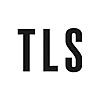Virginia Woolf disliked being photographed, painted or sculpted. Posing for both Stephen Tomlin and Vanessa Bell during a single day in 1931, she complained afterwards of feeling like “a piece of whalebone bent”, and fled Tomlin’s sitting before he had a chance to finish the sculpture. Bell portrayed her sister as almost entirely featureless in a couple of her most well-known paintings, and even these emit a strong sense of Woolf’s reluctance to sit under any scrutiny. So it is no surprise, when dipping into Maggie Humm’s elegant new book of Bloomsbury photographs, to find Woolf captured in various stages of camera-shyness: sensitive and unsmiling as a child at her beloved St Ives; standing, black-clad, in a miserable huddle with her half-brother and half-sister, just after their mother’s early death; perched awkwardly on the sands at Studland as a young woman emerging from serious illness; and, later, glaring with weary resentment into the lenses of professional photographers who were keen to capture the eminent author for their magazines.
The Bloomsbury Photographs takes up where Humm’s earlier book Modernist Women and Visual Cultures: Virginia Woolf, Vanessa Bell, photography and cinema (2002) leaves off, and can be read as an expanded and revised edition. The book is divided into sections, the first focusing on photographs reproduced from the King’s College albums of Dora Carrington and Lytton Strachey. These will hold a particular interest for the Bloomsbury enthusiast because the majority of them are previously unpublished (an impressive feat, given how often the various archives have been plundered by other biographers). Humm has chosen a strikingly intimate clutch of pictures, some so personal that it feels almost intrusive to look at them. A photograph of Carrington with Vivien John shows them clasped in a close embrace while Carrington plants a tender kiss on the younger woman’s cheek. A striking shot taken by Carrington of Strachey with his lover, Roger Senhouse, shows the latter glancing away as Strachey stares straight at the photographer: “the intensity of attention to Carrington is a sign of affection or love”, Humm concludes. These albums contain no faded snapshots of long-dead ancestors – the author reminds us that, unlike Woolf and Bell, “Strachey and Carrington are not in hock to a familial past”.
The generous selection of photographs of Woolf and Bell has been chosen from the Houghton Library at Harvard and the Tate Archive in London. They have been previously reproduced in assorted biographies over the past few decades, but Humm chooses to group her selections by date, allowing a cohesive and revealing narrative of her subjects’ lives to develop over the course of the book. In “The Early Years” she explores how Woolf and Bell’s albums continually reverted back to the past, whether by the insertion of childhood holiday photographs or by the inclusion of Victorian cartes de visite featuring eminent women such as Ellen Terry, George Eliot and Elizabeth Gaskell. She reveals how Woolf and Bell’s preoccupation with photographing pets, servants and visitors began in the 1880s, when they acquired a Frena camera. This hobby remained “a constant presence in their lives and a constant reflection of their evolving visual consciousness” due to the popularity and availability of the new Kodak cameras later on. A series of photographs taken at Talland House, St Ives, during the 1880s and 1890s, reproduced with startling clarity, pays poignant testimony to the family’s experiments with their new camera. A thin and pensive-looking Virginia, about eleven years old, clutches a cricket ball between her slender fingers while Vanessa, sturdier, frowns down with concentration at her bat. The details of their clothing are poignant: lace-up Victorian brogues with a coating of dust from the garden, thick tiers of fabric at the hems of their dark dresses. With the benefit of hindsight the reader fancies they can read something in the girls’ expressions that hints at the women they were later to become: Woolf, enigmatic, sensitive and finely tuned; Bell, solid, focused and passionate.
In the second section, “The Light and the Air”, a series of photographs taken between 1904 and 1929 reveals Woolf’s developing confidence as a writer and Bell’s as an artist. Woolf saw photography as “an elegiac art” and Bell often staged photographs, viewing them as “artistic prequels for her later art”: a snap of Virginia posing casually with Clive Bell on the beach at Studland reveals itself on closer inspection to be carefully arranged: “the two figures are in complementary positions with arms and legs in matching patterns”. Bell’s photographs reveal much of the social history of the time. Another photograph from the Studland series shows Marjorie Strachey lying on the beach in 1910, reading a newspaper with the headline “Votes for Women” clearly visible (at the time this photograph was taken, Woolf was immersed in the Women’s Co-Operative Guild and doing voluntary work for the suffrage movement). Other iconic photographs in this part of the book seem less posed. Although much reproduced elsewhere, it is still a joy to see the 1923 shot of Woolf caught mid-discussion at Ottoline Morrell’s Garsington Manor, a cigarette dangling from her lips and a lavishly feathered hat perched on her head while David Cecil sits at her feet and looks on admiringly. Gone is the deer-caught-in-the-headlights expression. Here Humm allows us a glimpse of Woolf the successful modernist writer in full flow.
The final section of TheBloomsbury Photographs spans the 1930s and reveals how photography took on a new poignancy for Woolf and Bell when close friends and family began to die before their time. Woolf begged for photographs of her friend Jacques Raverat from his wife, Gwen, after his death, and used the creation of pictures, both fictional and photographic, as a “constant defence against the pain of death” following the losses of Strachey, Carrington, Roger Fry and Bell’s son Julian. A different Woolf emerges from this last part of Humm’s book. She is shown socializing with friends and family at Monk’s House in Rodmell, legs elegantly crossed in a deckchair outside her writing lodge, or posed on the lawn by a garden urn with the family dog at her side. Here is the established writer, settled in her marriage, content with the routines of her country life and often photographed smiling as she played bowls on the lawn with family and Bloomsbury friends. Yet something harder to define is beginning to creep back into her expression, recalling those photographs from her girlhood.
A different Bell is shown too, particularly in a photograph taken shortly after the death of her close friend and erstwhile lover Fry. Observing her melancholy expression and closed-up posture, the reader becomes an uncomfortable witness to Bell’s raw grief. Humm also includes the Gisele Freund sequence of photographs taken of Virginia Woolf two years before her death. Woolf disliked these intensely, along with the whole process of being photographed. “So my afternoon is gone in the way to me most detestable and upsetting of all”, she recorded in her diary at the time. These candid, unsparing portraits call to mind her niece Angelica’s written description of Aunt Virginia having “the worn beauty of a hare’s paw”.
Humm’s expertly curated selection is so generous and wide-ranging that it is hard to see how any other collection of Bloomsbury photographs might now be necessary. Her accompanying text sheds light on the way that these albums were initially compiled: Woolf and Bell often included duplicate photographs in their albums and, discussing Roland Barthes’s theory that “the photographic image simultaneously records absence and presence”, Humm concludes that such duplication was an act of defying death. She even does this herself, including a couple of photographs towards the end of the book that have been reproduced earlier. A detailed history of domestic photography is woven skilfully throughout the author’s narrative, alongside a considered analysis of how these photographs should be read.
“Domestic photographs can be read through the observation of detail as well as through choices of framing”, Maggie Humm writes. With this in mind, The Bloomsbury Photographs becomes a curiously intimate experience. These may not be our relatives, but by the time we close this evocative book we feel a fleeting sense of loss.
Vanessa Curtis is the author of two biographies on Virginia Woolf and eight novels for children
The post Opening the family album appeared first on TLS.

 By Times Literary Supplement | Created at 2025-01-15 11:39:18 | Updated at 2025-01-15 17:55:57
6 hours ago
By Times Literary Supplement | Created at 2025-01-15 11:39:18 | Updated at 2025-01-15 17:55:57
6 hours ago





